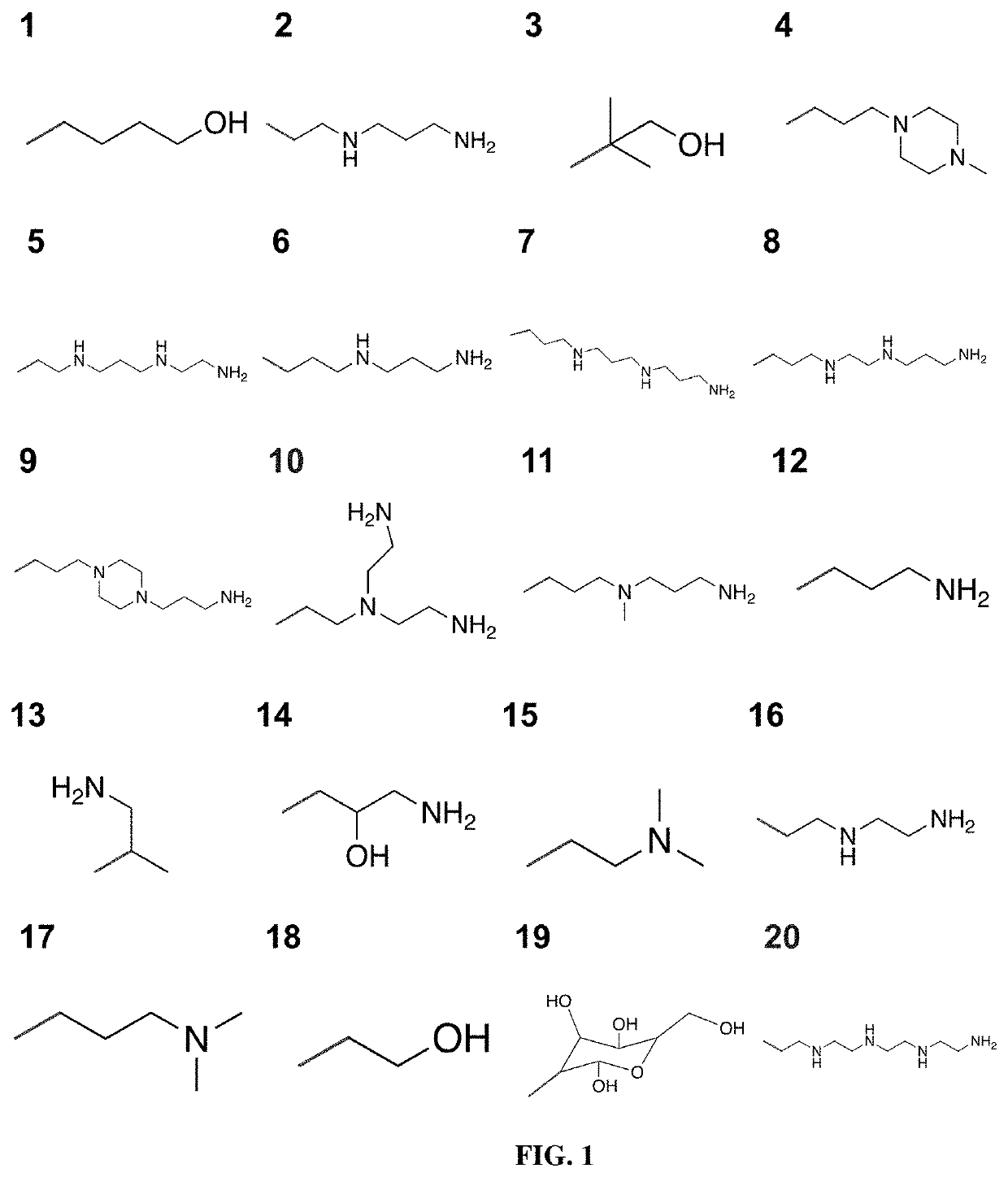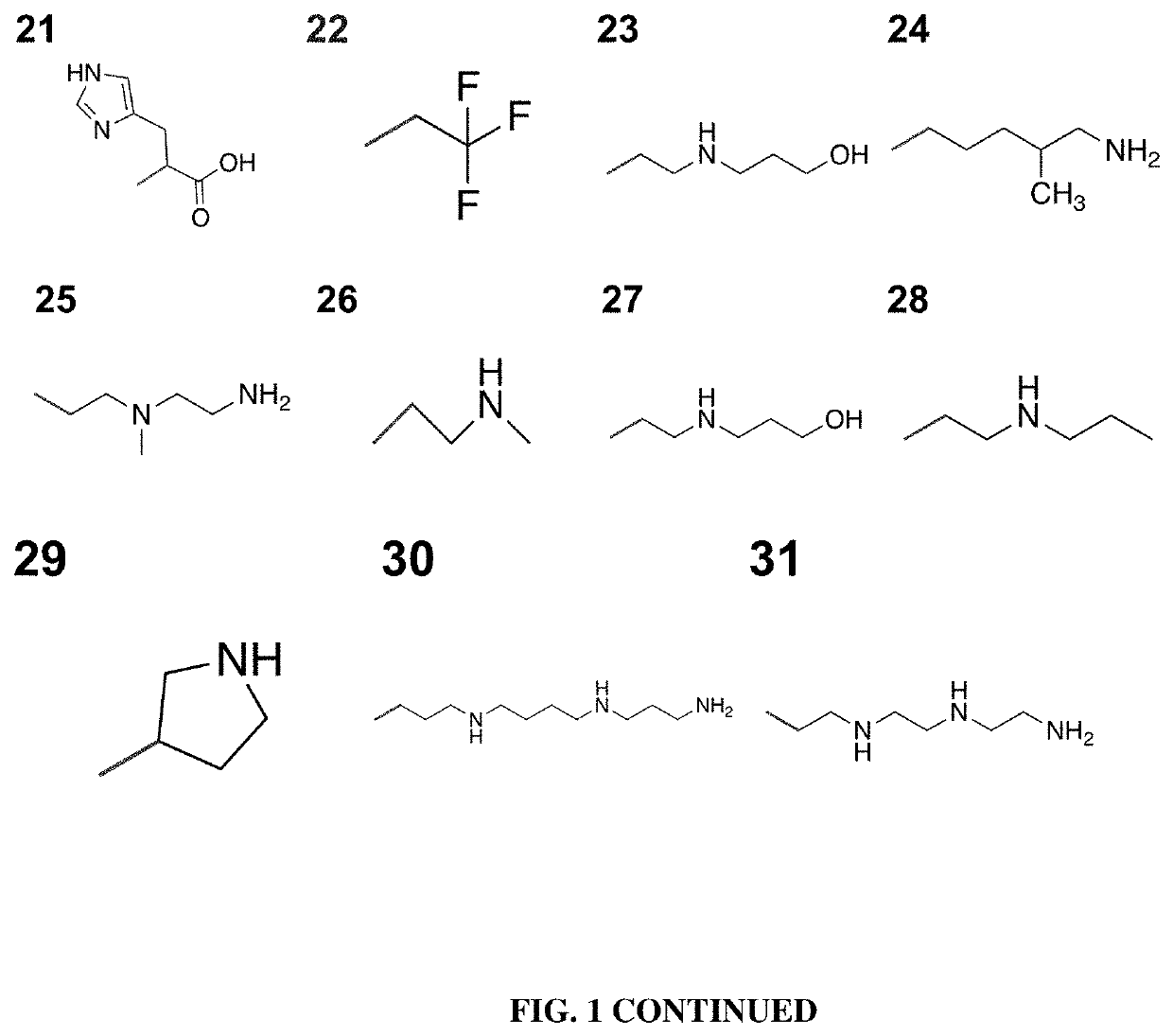Poly(amine-co-ester) polymers and polyplexes with modified end groups and methods of use thereof
- Summary
- Abstract
- Description
- Claims
- Application Information
AI Technical Summary
Benefits of technology
Problems solved by technology
Method used
Image
Examples
example 1
mer can Deliver mRNA
Materials and Methods
[0349]Materials
[0350]u-pentadecalactone (PDL), diethyl sebacate (DES), sebacic acid, N-methyldiethanolamine (MDEA), chloroform, dichloromethane, hexane, chloroform-d, chromium (III) acetylacetonate, ethylene diamine, ethanol amine, glycine, and 1,10-carbonyldiimidazole (CDI) were purchased from Sigma Aldrich (Saint Louis, Mo.) and were used as received. 2[(2-Aminoethyl)(methyl)amino]ethanol (AEMAE) was purchased from ChemBridge Corporation (San Diego, Calif.) Immobilized Candida antarctica lipase B (CALB) supported on acrylic resin (Novozym 435) was also obtained from Sigma Aldrich and was dried at 50° C. under 2.0 mmHg for 20 h prior to use. TranslT-mRNA transfection kit was purchased from Mirus Bio LLC (Madison, Wis.). Modified Fluc mRNA encoding for luciferase and murine EPO mRNA encoding for erythropoietin (EPO) were purchased from TriLink Biotechnologies (San Diego, Calif.). HEK293 cells, Daoy cells, and SH-SY5Y cells were purchased from...
example 2
sfection Efficiency is Highly Dependent on its End Group Composition
Materials and Methods
[0359]Modification of Polymer End Groups
[0360]To prepare PACE with different end groups, the parent polymer was synthesized with sebacic acid instead of diethyl sebacate, which yields PACE with a mixture of hydroxyl and carboxyl end groups. Both of the end groups were then activated with CDI at a molar ratio of 1:40 by stirring in dry dichloromethane overnight at room temperature. The mixture was washed three times with deionized water, followed by evaporation of DCM under vacuum to obtain the reactant, PACE-CDI (see scheme below).
[0361]PACE-CDI was reacted with amine-containing molecules to yield PACE with new end groups. Specifically, glycine and AEMAE was used to generate PACE-COOH and PACE-MAE, respectively. For conjugation, 5 mM glycine or AEMAE was reacted with 0.5 mM of PACE-CDI in DMSO for 40 h at room temperature under constant stirring. After reaction, the mixture was washed with 10-fo...
example 3
” Actuation of PACE for mRNA Delivery Actuated PACE Polymers
Materials and Methods
[0382]Actuation of Polymers
[0383]Polymers (20-30 mg) with different starting MWs were spread evenly on the inner surface of glass vials, forming thin films to ensure efficient air penetration. The vials were then incubated at a controlled temperature (typically 37° C.) with exposure to flowing wet air for different lengths of time.
[0385]To evaluate the cytotoxicity of PACE polymers and TransIT, HEK293 cells were seeded in 96-well plates at a density of 10,000 cells / well in 100 μL of media and incubated overnight to ensure adherence. The polymer:mRNA polyplexes or TransIT / mRNA complexes were formed using the same w:w ratios as for transfection experiments, and diluted in transfection media at different concentrations. 100 μL of polyplexes containing media were added to the wells to achieve final concentrations of mRNA ranging from 0.01 to 20 μg / mL. After 24 h of incubation, cell vi...
PUM
| Property | Measurement | Unit |
|---|---|---|
| Mass | aaaaa | aaaaa |
| Mass | aaaaa | aaaaa |
| Mass | aaaaa | aaaaa |
Abstract
Description
Claims
Application Information
 Login to View More
Login to View More - R&D
- Intellectual Property
- Life Sciences
- Materials
- Tech Scout
- Unparalleled Data Quality
- Higher Quality Content
- 60% Fewer Hallucinations
Browse by: Latest US Patents, China's latest patents, Technical Efficacy Thesaurus, Application Domain, Technology Topic, Popular Technical Reports.
© 2025 PatSnap. All rights reserved.Legal|Privacy policy|Modern Slavery Act Transparency Statement|Sitemap|About US| Contact US: help@patsnap.com



